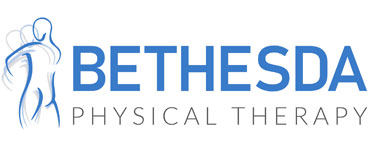What is Manual Therapy?
Manual therapy refers to the “hands-on” treatment of under performing muscles, tendons, ligaments, and joints. Encompassing a broad group of techniques performed by trained physical therapists, manual therapy treatments may include moving the joints in specific directions to regain movement (joint mobilizations), muscle stretching, passive movements and movements designed to improve muscle activation. Specific soft tissue techniques are also used to improve the mobility and functioning of tissues, nerves, and muscles.
In addition, the natural healing effects of human touch is an essential aspect of our treatment philosophy. Most patients enjoy a faster recovery and improved sense of well-being when manual therapy in used in conjunction with exercise and education.
How Is Manual Physical Therapy Different From Other Types of Therapies?
It may seem that manual therapy is similar to other types of treatments, such as massage, chiropractic, or other osteopathic therapies. However, one key difference is in the assessment process behind the treatment and integration of manual therapy into the patient’s personalized exercise program.
Manual physical therapy is based on careful examination of the patient’s movement patterns, including range of motion restrictions and compensatory movements that can prevent healing. Assessment is continuously done throughout treatment and techniques are altered to accommodate the patient’s response to the treatment provided. Research has shown that the most effective treatments involve customized manual therapy interventions combined with specific exercises to restore function.
Benefits & Common Diagnoses
Orthopedic manual physical therapists treat acute and chronic pain conditions affecting all areas of the body. When injury causes soft-tissue and joint restrictions that produce pain during movement, manual therapy can improve mobility, reduce pain, and restore normal functioning of the soft-tissues and joints.
Common diagnoses may include:
- Neck pain (muscle spasm, disc problems, etc.)
- Lower back pain (disc problems, facet joint restriction, spinal stenosis, etc.)
- Thoracic spine pain (disc problems, rib restriction, etc.)
- Headaches
- Fibromyalgia
- Temporal mandibular joint (TMJ) dysfunction
- Shoulder pain (impingement syndrome, frozen shoulder, rotator cuff injury, etc.)
- Hip pain (hip bursitis, total hip replacement, myofascial hip pain, hip impingement, etc.)
- Knee pain (iliotibial band syndrome, patellofemoral dysfunction, total knee replacement, etc.)
- Ankle pain (ankle sprains/strains, arthritis, tendinitis, etc.)
Manual Therapy Techniques
- Joint mobilization
- Passive range of motion
- Flexibility
- Soft tissue mobilization
- Myofascial release
- Trigger point release
- Active Release Technique
*Services are not available at all locations. Call or click the location page near you for that center’s services.
Ankle Pain
Learn MoreBack Pain
Learn MoreElbow Pain
Learn MoreKnee Pain
Learn MoreShoulder Pain
Learn MoreWrist & Hand Pain
Learn MoreWhat to Expect
Every patient has a unique health history, diagnosis and personal goals. When you come for your first appointment, we will create a personalized treatment plan for you.
We work with most major insurance providers and do our best to help keep the paperwork pain-free. If you’d like to confirm your insurance coverage, please let us know and we can verify when you schedule. If your insurance provider requires a co-pay, we will ask for this payment at each visit. We accept payments by cash, check or credit card.
When to Arrive
On average, a patient’s first visit lasts about an hour. We typically ask patients to arrive 15 minutes early to sign-in, complete paperwork and/or change clothes.
What to Bring
On your first visit, you’ll need to bring your physician referral or prescription (if needed), your insurance card, your primary registration forms, your ID or driver’s license and your co-payment (as applicable). If desired, you may bring a change of clothing.
How it Works
During your first visit, your physical therapist will do an initial evaluation and discuss your plan of care. The therapist uses this information to set goals for your continued treatment. Physical therapy goals may include improved movement, strength, endurance and flexibility, as well as decreased pain. Your subsequent visits will focus on treatment that is based on your diagnosis and individualized goals.

